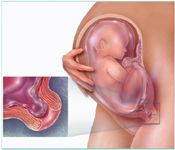Legally Speaking: The mystery of the incomplete history
Despite the inherent unfairness of viewing a physician's actions through the proverbial "retrospectoscope," in cases involving catastrophic brain injuries, a jury will invariably scour the events of the past to ensure that there was nothing the doctor could have done to potentially avoid them.
The then 21-year-old patient presented to the defendant ob/gyn for prenatal care in October 1996, with an estimated date of confinement of June 1997. Her medical history was negative in all pertinent respects. However, the defendant obstetrician's medical assistant documented an obstetric history that included preterm labor and fetal demise of an infant at 30 weeks' gestation 1 year earlier. The defendant ob also documented "preterm labor," but there is nothing in his chart to suggest he ever obtained or attempted to obtain any of the medical records pertinent to those events for confirmation.
THE PATIENT PRESENTED to the defendant hospital on February 9, 1997 at 23 to 24 weeks' gestation, in premature labor with complaints of vaginal bleeding and back pain. Examination revealed an incompetent, open cervix with bulging, but intact, membranes. Ultrasound revealed 3 cm of cervical dilatation and a fetus in the frank breech position. The patient was admitted for bed rest in the Trendelenburg position and given both magnesium sulfate and betamethasone.

THE INFANT RECEIVED APGAR scores of 6 and 6, and although he appeared blue at birth, he cried and breathed immediately. His heart rate was less than 100 and he was resuscitated and intubated. His blood gases did not indicate acidosis. The infant developed a large patent ductus arteriosus (PDA) and was admitted to the NICU to rule out sepsis and treat the respiratory distress syndrome and PDA. Thereafter, he was treated for hyperglycemia, hypertension, hypovolemia, premature lungs, and retinopathy of prematurity. He was noted to have bilateral hernias and chest x-rays showed chronic lung disease. On February 16, an IV infiltration occurred in the infant's right arm, the result of a blood transfusion. Ultimately, the infant was diagnosed with dry gangrene and lost his second and fourth fingertips.
A BRAIN ULTRASOUND taken on March 18 revealed a grade II hemorrhage and a May 14 brain ultrasound showed periventricular leukomalacia consistent with the prior hemorrhage. The next day neurology noted that an EEG showed mild bilateral cerebral dysfunction. A neurology consult was requested due to 2 days of self-limiting tremors and jerky movements, mostly in the lower extremities. A brain MRI taken on May 22 showed atrophy, periventricular leukomalacia, and a probable right pariaetal infarction. On May 24 the infant was discharged with his mother in stable condition. Subsequent records show that the infant suffered from cerebral palsy (CP) and global development delays.
The plaintiff argued that the ob/gyn failed to diagnose an incompetent cervix based upon the medical history provided by the patient or, at minimum, should have obtained the prior hospital chart due to the lack of information provided by the patient as to her obstetric history. Her lawyer argued that had the ob done so, a diagnosis of incompetent cervix would have been made and cerclage placed to prevent premature delivery.
